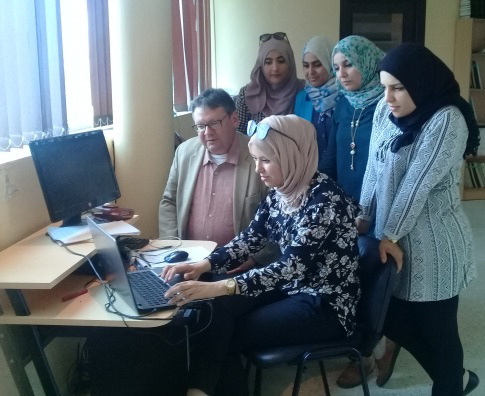|
Cycle 5 (2016 Deadline)
Potential of currents along the Tunisia coasts for renewable power generation
PI: Ali Harzallah (ali.harzallah@instm.rnrt.tn), National Institute of Marine Science and Technologies (INSTM)
U.S. Partner: Wassila Thiaw, National Oceanic and Atmospheric Administration (NOAA)
Project dates: December 2016 - August 2021
Project Overview
This PEER project developed a high-resolution modeling system for marine waters along the Tunisian coast using NOAA atmospheric and oceanic forcing fields. The modeling system includes maps of the marine areas where ocean energy can be potentially used for power generation. The project aimed to provide information on the circulation of water masses along and off the Tunisian coast, in particular information on circulation veins at a high resolution. The researchers also developed water temperature and salinity maps, and the model results were validated by direct observations in the sea using NOAA analytical tools.
Results from the project may help in the creation of renewable energy alternatives by the Tunisia Electricity Company, and as well as be helpful for several other applications, including offshore aquaculture production and impact studies for desalination plants. The project was a valuable opportunity for building the capacity at the National Institute of Marine Science and Technologies (INSTM), as the PEER research team and the broader INSTM community gained knowledge on the use of high-resolution ocean models and outputs and built valuable international linkages.
Final Summary of Project Activities
 | | The team reviews the project models with Dr. Vintzileos during his visit (photo courtesy of Dr. Harzallah). |
Dr. Harzallah and his group ran three 10-year simulations (2008-2017) for marine elements, including circulation alone; circulation and tides; and circulation, tides and waves. The three simulations allowed the team to separate out the relative roles of water circulation, tidal oscillations, and waves and their contributions to marine energy potential. In addition to the model simulations, they considered results from drifter trajectories using data from the Global Drifter Program NOAA-OSMC-PhOD, calculating and plotting the trajectories to evaluate their energy potential. For example, drifters accelerate when passing in front of the Cap Bon coasts in northeastern Tunisia, the main area of strong marine current power shown by the model simulations.
The researchers also analyzed offshore wind based on the most recent available data sets to examine locations where wind turbines can be installed. Based on their model results, the PEER team developed maps of water characteristics and circulation along the Tunisian coast with descriptions of where marine dynamics and offshore wind can be used for power generation. The main areas identified are as follows: offshore wind power using fixed turbines east-northeast of Kerkennah; offshore wind power using floating turbines north of Bizerte, north-east of Ghar El Melh coasts, and east of Djerba; a main water vein of the northeastern coasts of Cap Bon; and tidal-motive energy in certain channels and in the Gulf of Gabès.
The PI and team also began developing an application to forecast sea power in 10-day increments, and the PI participated in several workshops and meetings to present results and discuss potential future partnerships with the National Electricity Renewable Energy Company and other Tunisian government stakeholders. The PEER project also resulted in a formal agreement between INSTM and MEDREC (Mediterranean Renewable Energy Centre) to permit close collaboration between the institute and MEDREC in different aspects related to renewable energy. The PI also received a $25,000 grant from the Tunisian Ministry of Higher Education and Scientific Research to continue work on renewable energy. At the time of their final report, they were pursuing several potential funding opportunities from European and Tunisian sponsors.
Publications
Marwa Ouni, Avichal Mehra, and Ali Harzallah. 2021. The effect of the temporal resolution of the wind forcing on a central Mediterranean Sea model. Dynamics of Atmospheres and Oceans 96: 101262. https://doi.org/10.1016/j.dynatmoce.2021.101262
Sana Chaouch and Ali Harzallah. 2020. A zoomed 3D circulation model for the Monastir bay: comparison to operational analyses. Bull. Inst. Natn. Scien. Tech. Mer de Salammbô 47: 157-164. https://aquadocs.org/handle/1834/41475
Back to PEER Cycle 5 Grant Recipients
|
|
|
|




